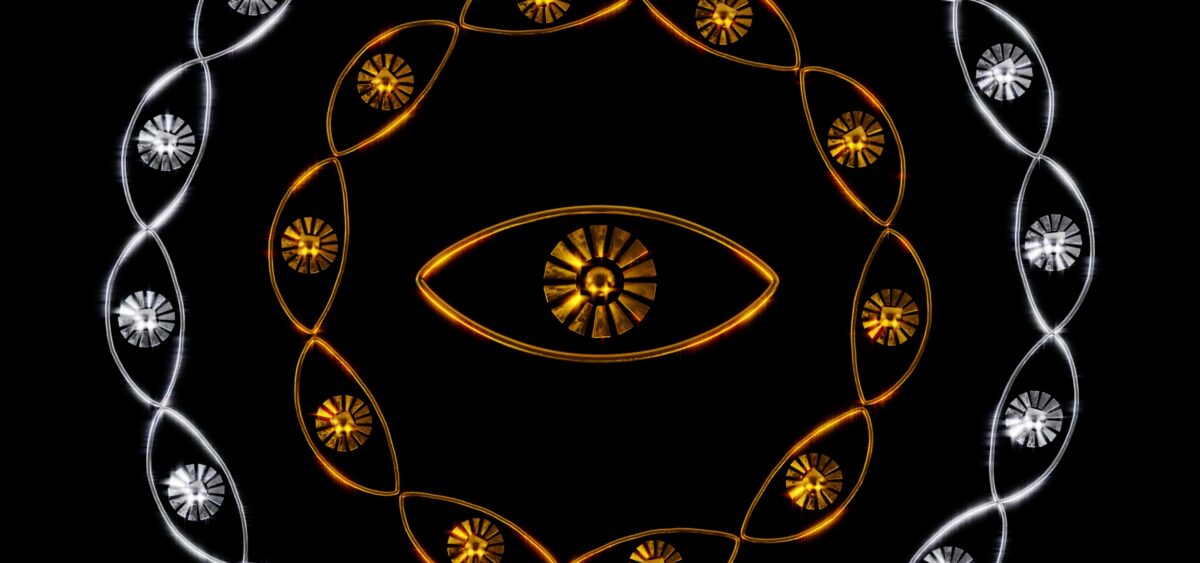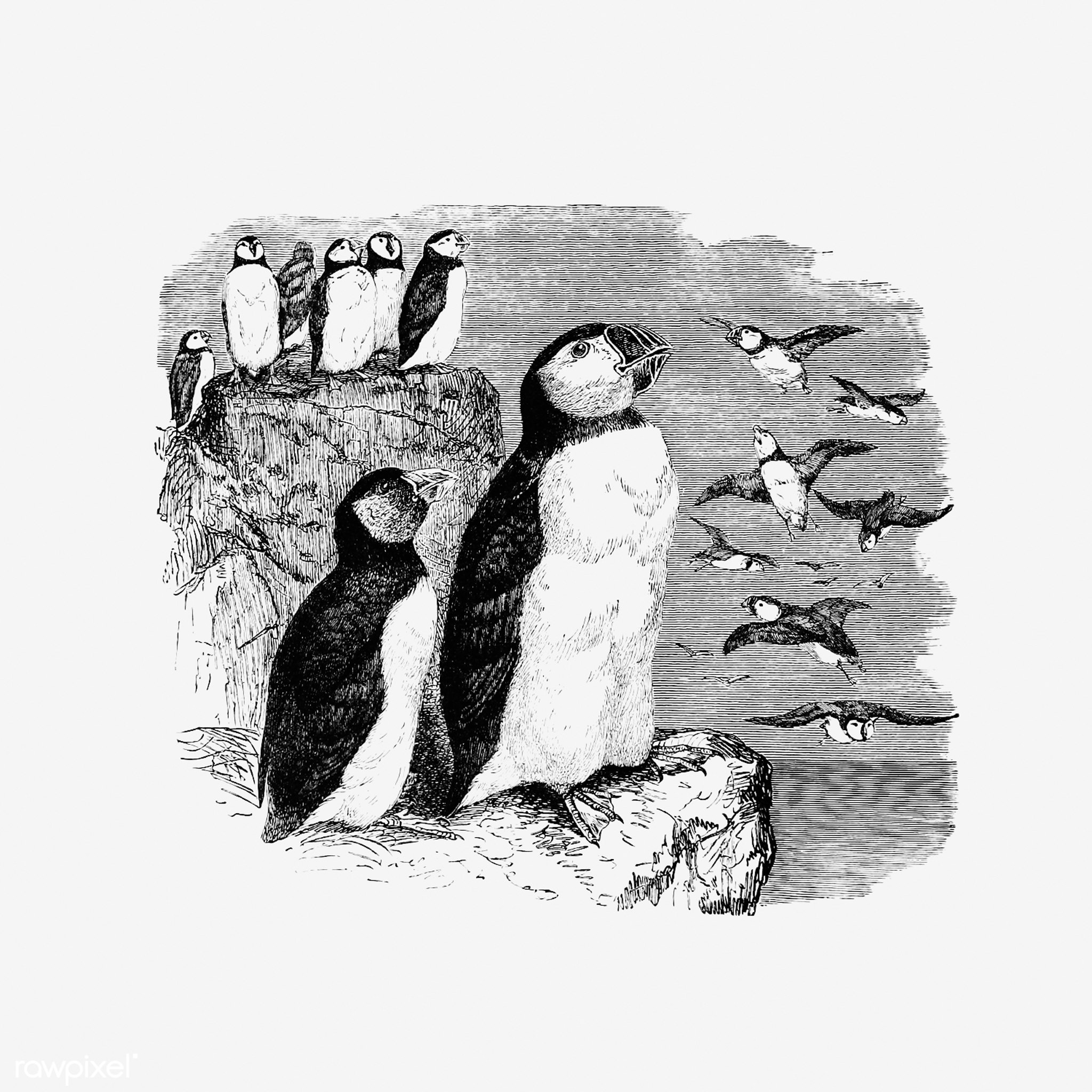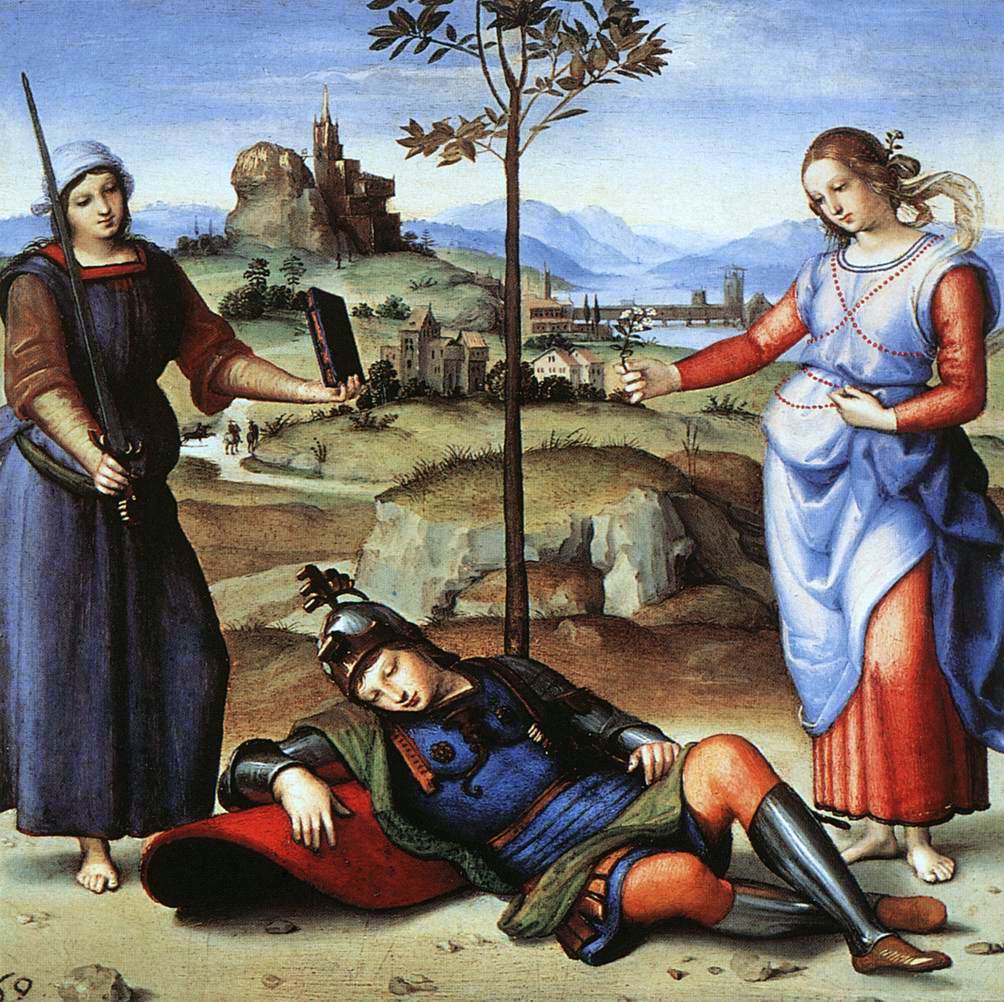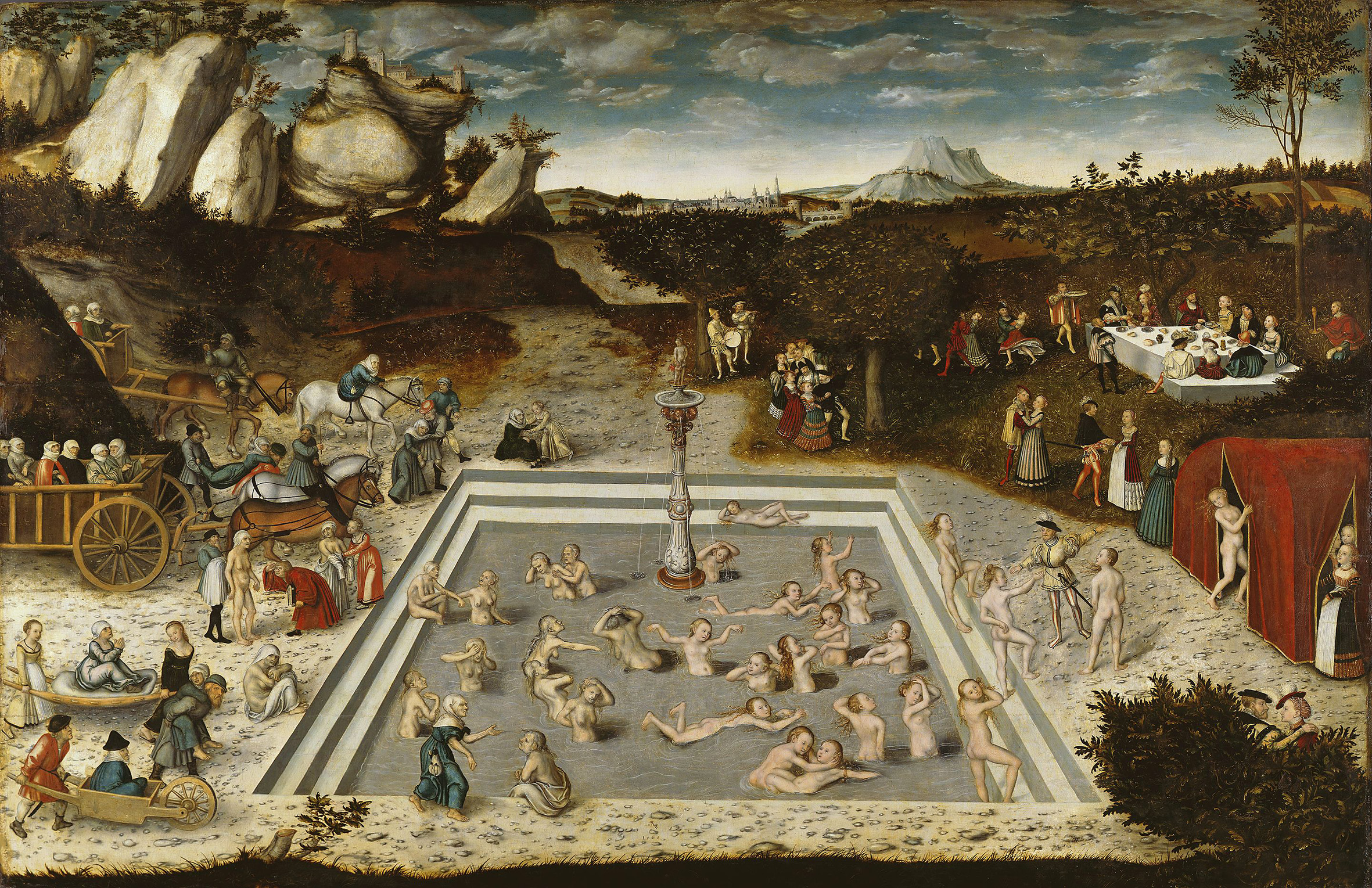
Joseph Campbell, the most famous mythologist of the 20th century, played the saxophone, surfed, and above all, read. He believed that myths from all around the world are the language of the soul, in which an epic human story is told.
Ancient stories or those collected by ethnographers; fairy tales, folk tales, and legends from across the globe; the Old Testament as well as Aztec, Egyptian, and Indian myths; The Grimm Fairy Tales and One Thousand and One Nights. Joseph Campbell searched all of the above for hidden patterns, timeless and spaceless forms of the human imagination. He developed the idea of the spiritual unity of human beings when he discovered the existence of universal motifs and topics, such as the virgin birth, the journey into the afterlife, sacrificing kings, and the resurrection of a deity. As James Hillman aptly pointed out, Campbell belonged to a generation of intellectuals born shortly before World War I whose works were created under the influence of 19th-century models of scholarship. The American’s incredible erudition and diligence stemmed from his ambition to create a total synthesis of human spiritual life.
His fascination with Indigenous American mythologies was inspired by the childhood books his parents bought him. He was first and foremost a reader, up until old age. When Alan Watts once asked what type of yoga he practiced, Campbell allegedly replied that his was the yoga of “emphasizing sentences.” Jean Erdman, an avant-garde theater director and dancer (Campbell’s wife of nearly fifty years who died in 2020 at the age of 104), recalled that during one of their first walks in Manhattan, Campbell lent her Oswald Spengler’s The Decline of the West. Suddenly it started pouring. The young man immediately took off his coat, and she assumed he meant to romantically shield her from the rain. Soon enough she realized he was more interested in protecting the book than her.
However, his adoration for books and his incredible erudition weren’t an obstacle to the other activities he undertook. Campbell abandoned his academic career when he became convinced that teaching others about finding life truths in books was a naive way of deceiving both his students and himself. He learned surfing from the one and only Duke Kahanamoku. He played the saxophone in a jazz band. He was an athlete and a sportsman—he almost qualified for the US national track and field team (not making it to the Olympics was purportedly his life-long regret). He constantly traveled between Europe and America, which resulted in peculiar meetings. He met Jidda Krishnamurti on a steamer in 1924, and the philosopher’s secretary gave Campbell his first book about the Buddha—Edwin Arnold’s The Light of Asia. Thanks to this friendship, later strengthened in the Dutch Castle Eerde where Krishnamurti’s organization was headquartered, Campbell was introduced to the “miraculous world of India’s spiritual culture.”
At the turn of the 1930s he studied medieval literature at the Sorbonne (mostly tales about the quest for the Holy Grail) and enjoyed the aura of bohemian Paris. He then moved to Germany to study Sanskrit. His first book was an analysis of James Joyce’s Finnegans Wake. His other great literary fascination was Thomas Mann, whom he met and with whom he corresponded.
Campbell is usually associated with “the Jungian School of myth interpretation.” In contrast to theories that reduced the meaning of holy tales to social life or politics, the Jungian School focused on the imagination and the influence of mythical fantasies on the soul. This certainly brought Campbell closer to Jung; the American participated in the famous meetings of the Eranos Circle, during which the most renowned theologists of the 20th century debated with other members who specialized in depth psychology. However, Campbell’s philosophy was also indebted to other schools of thought that are often overlooked. The unconscious he wrote about wasn’t psychological, but metaphysical. The Upanishads and Indian philosophy were more important to him than Jungian psychology. The idea taken up by Campbell originated in ninth-century BCE India. According to it, deities represented in cults and mythologies are not beings that live in the outside world, but internal psychological forces we project onto our surroundings. What’s more, Campbell also referenced the field of cultural anthropology.
He became a scholar with a cult following; his theories echoed the cultural changes that were happening in the United States, while his talent for storytelling and his presence in the media greatly contributed to his popularity. As a mentor, he was incredibly cherished by younger generations of scholars at the Esalen Institute, intellectuals fascinated with broadly-understood spirituality, among them the above-mentioned Alan Watts, as well as Stanislav Grof, Joan Halifax (Campbell even organized the wedding of Grof and Halifax), Robert Bly, James Hillman, and Richard Tarnas—to mention only a few.
The Metaphysical Voice
The basic assumption of Campbell’s philosophy is that the key to understanding our spiritual capabilities is mythology. Ancient tales, just like those recorded by ethnographers, are in many ways similar to dreams. The events they portray are governed by the same kind of logic. Mythical and oneiric visions express deeply rooted desires and fears, hopes and conflicts. But if dreams express the content of an individual psyche, myths are the voice of an entire society, an expression of universal concerns. The dream is an individual myth, while the myth is a collective dream, as Campbell put it elegantly. Since myths are made of archetypal content, they relate the unchangeable elements of human experience: birth, maturation, sickness, and death. Myths permeate the history of entire societies. Their obvious, noticeable manifestations are the ritual or the temple, but philosophical, ideological, and political concepts are woven from them as well. In this sense, myths are more real and tangible than dreams, even though they are both made of the same material.
Myths can adopt various forms, depending on local conditions, their historical or environmental aspects. Despite this, Campbell argued that comparing myths from all over the world proves the existence of “the great tale of humanity,” made of the same age-old motifs and kaleidoscopic elements: specific eras and cultures are simply different combinations of the same finite number of elements. This universalistic approach brings to mind Aldous Huxley’s “perennial philosophy” or Mircea Eliade’s “morphology of the sacred,” but in Campbell’s case it most probably came from India. In one of his works Campbell quotes Ramakrishna, who wrote that “God has made different religions to suit different aspirants, times, and countries. All doctrines are only so many paths; but a path is by no means God himself. Indeed, one can reach God if one follows any of the paths with whole-hearted devotion… One may eat a cake with icing either straight or sidewise. It will taste sweet either way.”
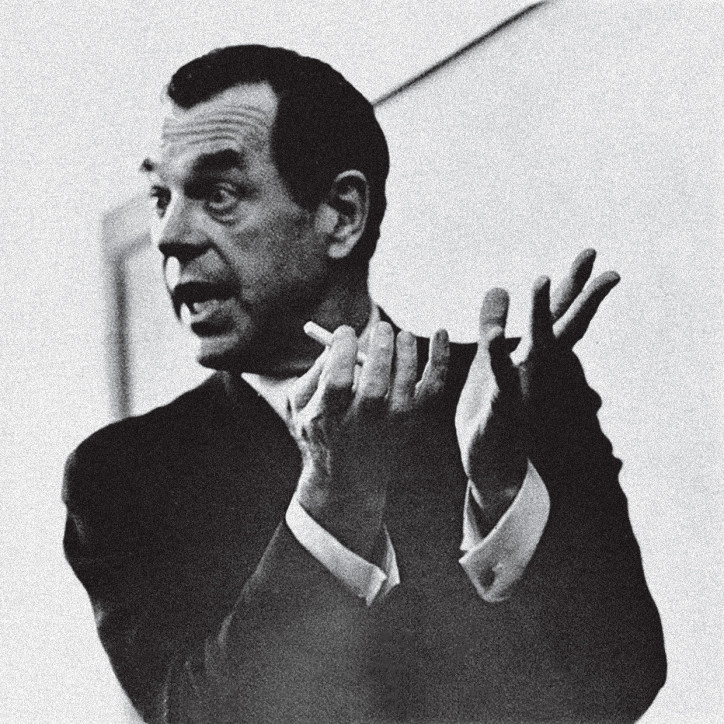
According to Campbell, mythologies regulate the functioning of societies, but their basic role is both psychological and metaphysical. A myth is, in its essence, an illustrative and metaphorical expression of the psychophysical energies that fluctuate in the body. The immutability of mythology determines the body’s biological immutability. It is not a “materialistic” approach that reduces the human spirit to pure physiology: these energies that exist in the body are mystical forces (for this reason, some commentators described Campbell’s notions as “tantric”).
In a way, myths are the language of the soul itself. This may explain why hearing holy tales is so stimulating, and why they delight us and are morally inspiring—even though they can also haunt and enslave. As points of reference for certain ways of thinking, myths are real forces that affect the lives of societies and individuals. Myths are omnipresent. They create cities and civilizations. They are dreamed up. Most important of all, they are guideposts in the labyrinth of everyday life (people often speak of life by referencing mythical images, the labyrinth among others). If someone—like me—has a Batman figurine on their shelf, they also participate in mythology. In this case, they emulate the myth of the man who resembles a bat.
Campbell’s conceptions may be criticized from an Enlightenment perspective, as an encouragement to return to archaic forms of thinking. The world of myths is indeed a world of prejudices, stereotypes, and violence to which humankind should not want to return. Campbell claimed that the problematic aspects of mythology are most often connected to literal interpretations—the mistake of “literalism.” In truth, myths never have a literal meaning. They are told for the sake of contemplating rather than acting, and are supposed to stimulate an internal metamorphosis instead of an external crusade. The monster that must be faced and killed is not an external being (a real dragon living in the mountains, a devil in the desert, or even a non-believer), but an image, a psychological entity. The same goes for other popular beliefs. The Holy Land is not a precise location on a map, but a state of mind. A virgin birth is not a biological anomaly, but an expression of spiritual purity. “Our Father Who Art in Heaven” is not addressed to a man who lives in the clouds, but the way the prayer is formulated is not accidental: it expresses a specific degree of kinship, while the sky itself symbolizes elusive transcendence. All of this may seem banal, but Campbell reminds us that literal interpretations of myths are the source of many ancient and modern conflicts. All forms of fanaticism are directly linked to mythology.
To put it plainly, the stuff of religion is metaphor. In order to understand this better, one must read myths that circulate in foreign cultures—only they have the power to free one from dogmatism, liberate both heart and imagination. Dealing with the myths of one’s own culture is more difficult, because we have a natural inclination to treat the related events and stories as if they were actual facts. Poles might think, for example, that Mary really bore a child as a virgin, that Jesus literally rose from the dead, that hell is under the surface of the Earth, that the devil can enter someone’s body, or that Prince Popiel was really eaten by mice.
The outlined approach may seem disappointing to those who are devoted to their faith. On the other hand, Campbell’s theory draws attention to all figments of the imagination, treating them as manifestations of actual events, “external” facts that are crucial to human lives. It seems that Campbell didn’t believe in God the same way a religious person does, although he never claimed—as atheists do—that God is a “delusion,” either (this is where the American would part ways with Jung, who never put forward such sharp distinctions). Some of Campbell’s critics claim that he was not a true scholar and that reading various mythologies out of context cannot be justified from a scientific point of view. In response to such criticism, Campbell agreed that he wasn’t an expert in any field—he was no indologist, Egyptologist, sinologist, or Americanist. However, he emphasized that only a risky attempt to synthesize knowledge on the basis of detailed findings can provide a complete image of a phenomenon. Many scholars gather expertise in specific fields, while he believed himself to be a “generalist” (just like Mircea Eliade argued that specialization is a huge problem for modern studies of the human being). Besides, let’s remember that Campbell purposefully gave up his academic career, since he could not reach his goals while pursuing it—and these goals went well beyond “academic standards.” It is worth noting, however, that Campbell’s writings are excellently researched and scholars still gladly reference them.
The Mythologist with a Thousand Faces
The tetralogy Masks of God is an incredibly ambitious project that aims to catalog everything that has been discovered about the beliefs of Homo sapiens before the 20th century. Unfortunately, Campbell did not finalize the Historical Atlas of World Mythology—he worked on this project literally until the day he died in 1986. In both these works, just like biologists used to create “natural histories” of plants and animals by outlining their evolution, Campbell tried to draft a natural history of deities.
The mythologist’s most popular and important work remains The Hero with a Thousand Faces. It describes the unchanging structure of the journey of the mythical hero. According to Campbell, every hero presented in myths, legends, or fairy tales—and sometimes in contemporary literature or film, too—goes through a series of identical metamorphoses. No matter if they’re Jesus, the Buddha, Frodo, or Harry Potter, readers, listeners, and viewers are witness (more or less consciously) to various sequences of the same events.
The hero’s first characteristic feature is their extraordinary parentage: they are the child of a god, they are born in a dream or by a virgin, they may also be an orphan (Jesus’s mother was the Virgin Mary; the Buddha’s mother became pregnant after she dreamed of an elephant’s white tusk; Harry Potter, Batman, and Geralt of Rivia are orphans whose parents were outstanding individuals—and similar examples could be multiplied indefinitely).
The most important thing for every hero is the “journey.” To some extent, Campbell transposed Arnold van Gennep’s theory of rites of passage into the world of narrative (he always openly admitted to this source of inspiration). According to Van Gennep, the life of an individual is a sequence of passages from one social category to another, and the whole process is accompanied by specific rituals. Some obvious examples may include different kinds of initiations, rites, weddings, and even funerals. They are a means to celebrate not only events that are relevant in the life of an individual, but also cosmic events, important to the functioning of a whole society, such as the change of seasons or New Year’s Eve. Rites of passage always follow a specific pattern: (1) the phase of separation; (2) the phase of liminality; (3) the phase of incorporation. This sequence is apparent in the rites of passage in some Indigenous communities: the child is taken away from society and its mother (phase 1); for a certain period of time it is not considered a rightful member of society, it lives outside of the community, sometimes it is treated as a “specter” (phase 2). Finally, it is reintegrated into the community as an adult, an individual with a new identity, sometimes even a new name, and this return is accompanied by a rite (phase 3).
Campbell noticed in world mythologies the same pattern that governed stories about various heroes. In Campbell’s terminology, Van Gennep’s phases were presented as: (1) the Departure; (2) the Initiation; (3) the Return.
Stage 1: The hero is called on their journey. Destiny claims them through some minor event and takes them away from the world in which they used to live, into the unknown. They leave their house, their castle, their kingdom; they are kidnapped or leave willingly. The Buddha’s story starts when he sees a beggar, an ill person, a corpse, and an ascetic. From then on Prince Siddhartha (as the Buddha was then known) can no longer stay in his father’s castle, where he is hidden away from the world. Harry Potter, on the other hand, suddenly obtains a letter from the wizard world while living in a little cell under the staircase. The unknown manifests itself in very different forms: as a far-away kingdom, a secret island, a mountaintop, or some kind of underground; it may also be the underworld, or a universe that is somewhere higher up. This different reality is always teeming with polymorphic creatures. Some heroes resist the call for departure, but it returns continually (there are many stories about the tragic consequences of the hero’s resistance—according to Campbell, an example may be Lot’s wife, who refused to listen to Jehovah; in psychological interpretations, these are the sources of all kinds of obsessions). At an early stage of the hero’s journey a supernatural helper always appears: in Christian legends assistance is given by Holy Mary, in Dante’s work—by Beatrice or Virgil, in the Harry Potter series—by Hagrid, while in The Lord of the Rings it is Gandalf who helps Frodo. And so on.
Stage 2: The rites of passage take place in a dangerous and oneiric world. The hero must face a series of terrifying challenges and difficult trials. They must solve the riddle of the Sphinx. Chop off Medusa’s head. Steal the treasure. Find the Holy Grail. Defeat the seductive demons in the desert, or—like the Buddha—meditate under a fig tree for seven weeks. Steal the flame. Descend into the realm of the dead. Sometimes they must die and rise from the dead. By killing the dragon, werewolf, tyrant, or father, the hero frees the energy that nourishes the world. Passing the initiation rite allows them to become rich, to win the hand of the princess, attain salvation of the soul, or consume a magic elixir; they may also experience an epiphany or simply be reconciled with their father. In the psychological interpretation, this stage is always understood as an enrichment of the hero’s consciousness, some kind of revelation.
Stage 3: The hero must always return to their community, the universal pattern requires it. Their trophy—the Joyful News, wisdom, gold, the enemy’s head—should be delivered to their kingdom or tribe, in order to strengthen and renew it. Their achievement should become a gift. The Buddha wondered if his revelation would be understood and whether he should teach others or not. If he hadn’t returned to the unenlightened, he would never have become a hero.
A Hero of Pop Culture
It is extremely interesting that Campbell’s theory inspired iconic pop-cultural works. The most famous example would be Star Wars, whose creators openly acknowledged they based the screenplay on Campbell’s writing (moreover, it’s common knowledge that The Hero with a Thousand Faces is one of the basic reads for Hollywood screenwriters). Even Dan Brown has admitted he was indebted to the works of the American mythologist. Doesn’t the spectacular commercial success of Star Wars or Dan Brown’s novels attest to the accuracy of the pattern described by Campbell?
However, Campbell wasn’t trying to create a recipe for literary or cinema success—his works were supposed to enlighten the modern human being. The philosopher’s project itself fit the scheme he put forward in his theory. He wanted to transmit the knowledge he acquired to those who were devoid of traditional models supplied by mythical tales. The Hero with a Thousand Faces was created as a psychological and moral inspiration for anyone who struggles against their own demons and nightmares, or is afraid of leaving the walls of their safe castle.
According to the philosophy described above, all fear is understood as a “call to adventure” or a “call of destiny.” The hero must descend into darkness, be swallowed by the whale, study the unconscious. As goes the popular saying falsely attributed to Campbell, but entirely consistent with his outlook: “The cave you fear to enter holds the treasure you seek.” The hero is a hero precisely because they overcome their fear of others, of solitude, pain, or death. Campbell most often tackled this problem by describing the fear of death: he argued that overcoming it is indispensable if one wants to live a full and happy existence. Overcoming this fear was supposed to rely on the understanding that death is not the opposite of life, but merely one of its aspects. Existence always happens on the verge of death, which is why every life is always a risky heroic adventure.
The scholar interpreted the basic mythological source of fear in the West—the figure of the devil—in a similarly fascinating way. He argued that the image of Satan reflected all the repressed psychological energy that has not received its proper expression. According to one of the most basic laws of psychoanalysis, what is repressed always returns with redoubled force: this is where the horror and power of the devil comes from. Paradoxically, the devil is God who has not been recognized.
In other words, Campbell believed that humans are able to recognize the positive aspects of events that seem entirely negative. Everything boils down to whether one is able to say “yes” to their own risky adventure.
It is wrong to think about heroism in terms of outstanding achievements, acquiring great power and wealth, or introducing significant change, since according to Campbell it all comes down to the usual rearranging of things around oneself. The salvation of the world is possible through making it more alive. It can become alive only when life is introduced into it, which happens when one discovers the source of life in themselves during an individual adventure. And this may be an experience shared by everyone who exists.
A Journey Through the Darkness of Modernity
Some criticized Campbell because heroic journeys can be associated with the risk of abuse, an incentive to enhance the power of one’s ego as measured by the number of completed challenges. This, however, is pointless criticism. In a philosophical commentary on his work, Campbell clearly argued that these were not the goals of a modern hero. Nor did he believe that a return to the archaic world of myth was desirable or even possible.
The contemporary hero lives in a world devoid of deities and old divisions; in a global reality, tribal mythologies that encourage fighting against the Other—and sow fear of the Other to maintain the traditional order of things—are no longer legitimate. The contemporary hero does not fight in the name of their community anymore, but against it. It is no longer some kind of “chosen nation,” but simply a “political and economical body.” The hero’s responsibility is not to bring glory to their tribe, but to liberate it from private nightmares, various provisional roles and identities, and to tear off the successive, always outdated masks of God (just like trauma, mythological dragons represent the power, strength, and tyranny of the past). In a country whose citizens are inhabitants of the whole planet, promoting only one of the totems and one of the flags is both harmful and completely unnecessary.
A world explored with a telescope and a microscope does not leave any room for external projections of gods—the only place they can inhabit and perform their roles in is the inner realm of every human being. Modern religious life, limited to the occasional holier-than-thou Sunday moment while following an ethics of profit on a daily basis, is nothing but a sad knockoff of true piety. Modern society must change, but the hero should not stand by idly, waiting for change to come. The hero is the only one who can start the process and revitalize society with the universal image of the “human god”—the prize of their archetypal journey.
In a world abandoned by the old gods, serving the Ego is not the only choice we have. The heroes and heroines of our times can still stand their ground without harming others and themselves. They can fight just as Joseph Campbell did in his books, staving off the beasts of commodified living, the darkness of 20th-century nihilism, or the dragon of a secular world, by acting as living proof of the endless wealth and beauty of the human imagination.


